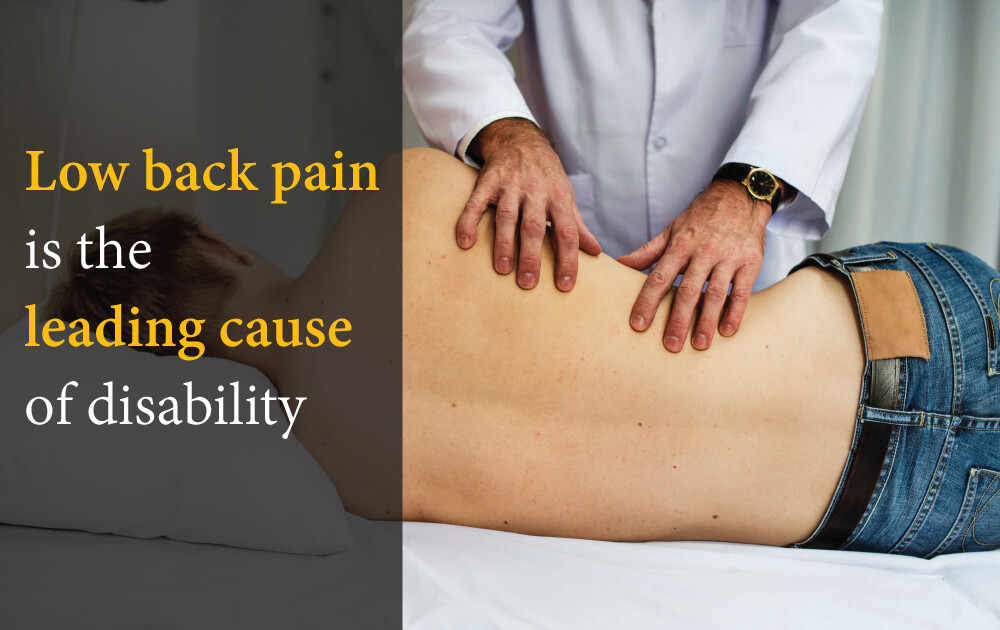Affecting an estimated 540 million people at any one time, but unfortunately, the condition is mistreated against the best-known guidelines. Worldwide, overuse of inappropriate tests and treatments such as imaging, opioids, and surgery means patients are not receiving the right care, and resources are wasted.
Evidence suggests that low back pain should be managed in primary care, with the first line of treatment being education and advice to keep active at work.
A 2008 survey of all registered physiotherapists in Maharashtra (India) showed that 46 percent of physiotherapists advised patients with low back pain to rest.
63 percent of Indians believe that bed rest is the mainstay of therapy.
A new series of papers in The LANCET highlights the extent to which the condition is wronged, often against best practice treatment guidelines.
According to researchers a prospective study in the period 10th October 2008 of 25251 patients with chronic back pain received in an Indian orthopedic clinic, reported that 100 percent of patients underwent imaging, with 76 % diagnosed with non-specific low back pain and 10 % with spondylosis. According to the Global Burden of Disease study every year, a total of 7.3 million years of productive life is lost in India because of disability from low back pain. Physiotherapist and Assistant Professor Saurabh Sharma, in the Department of Physiotherapy, Kathmandu University of Medical Sciences, told InnoHEALTH magazine in an email interview that he was also aware of practices of low back pain, which is far away from evidence recommendations.” For example, rest, lumbar supports/corsets are prescribed very commonly against the current recommendations.
Also Read: Cybersecurity Bootcamp for Hospitals
Similarly, all patients are prescribed medicines, electrotherapy, taping, and ex-rays. More than half individuals are advised MRI. Similarly, patients are also treated with new treatments that the clinicians claim but have never been tested in clinical trials (research), such as matrix rhythm theory practice in Pune, he said. In reality, a high proportion of patients worldwide are treated in emergency departments, encouraged to rest and stop work, are commonly referred for scans or surgery or prescribed painkillers including opioids, which are discouraged for treating low back pain.
“The majority of cases of low back pain respond to simple physical and psychological therapies that keep people active and enable them to stay at work,” explains series author Professor Rachelle Buchbinder, Monash University, Australia. “Often, however, it is more aggressive treatments of dubious benefit that are promoted and reimbursed.”
The series reviews evidence from high-and low-income countries that suggests that many of the mistakes of high-income countries are already well established in low-income and middle-income countries. Rest is frequently recommended in low and middle-income countries, and resources to modify workplaces are scarce.
Low back pain results in 2.6 million emergency visits in the USA each year, with high rates of opioid prescription. A 2009 study found that opioids were prescribed to around 60% of emergency department visits for low back pain in the USA. Additionally, only about half of people with chronic back pain in the USA have been prescribed exercise. In India, studies suggest that bed rest is frequently recommended, and a study in South Africa found that 90% of patients received pain medicine as their only form of treatment.
“In many countries, painkillers that have limited positive effect are routinely prescribed for low back pain, with very little emphasis on interventions that are evidence-based such as exercises. As lower-income countries respond to this rapidly rising cause of disability, it is critical that they avoid the waste that these misguided practices entail,” adds series author Professor Nadine Foster, Keele University, UK.
The Global Burden of Disease study (2017) found that low back pain is the leading cause of disability in almost all high-income countries as well as central Europe, Eastern Europe, North Africa, and the Middle East, and parts of Latin America. Every year, a total of 1 million years of productive life is lost in the UK because of disability from low back pain; 3 million in the USA; and 300,000 in Australia (see GBD for country-specific estimates available).
Low back pain mostly affects adults of working age. Rarely can a specific cause of low back pain be identified so most are termed nonspecific and evidence suggests that psychological and economic factors are important in the persistence of low back pain? Most episodes of low back pain are short-lasting with little or no consequence, but recurrent episodes are common (about one in three people will have a recurrence within 1 year of recovering from a previous episode) and low back pain is increasingly understood as a long-lasting condition.
The authors say that healthcare systems should avoid harmful and useless treatments by only offering treatments in public reimbursement packages if evidence shows that they are safe, efficient and cost-effective. They also highlight the need to address widespread misconceptions in the population and among health professionals about the causes, prognosis, and effectiveness of different treatments for low back pain.
“Millions of people across the world are getting the wrong care for low back pain. Protection of the public from unproven or harmful approaches to managing low back pain requires that governments and health-care leaders tackle entrenched and counterproductive reimbursement strategies, vested interests, and financial and professional incentives that maintain the status quo,” says series author Prof. Jan Hartvigsen, University of Southern Denmark. “Funders should pay only for high-value care, stop funding ineffective or harmful tests and treatments, and importantly intensify research into prevention, better tests, and better treatments.”


